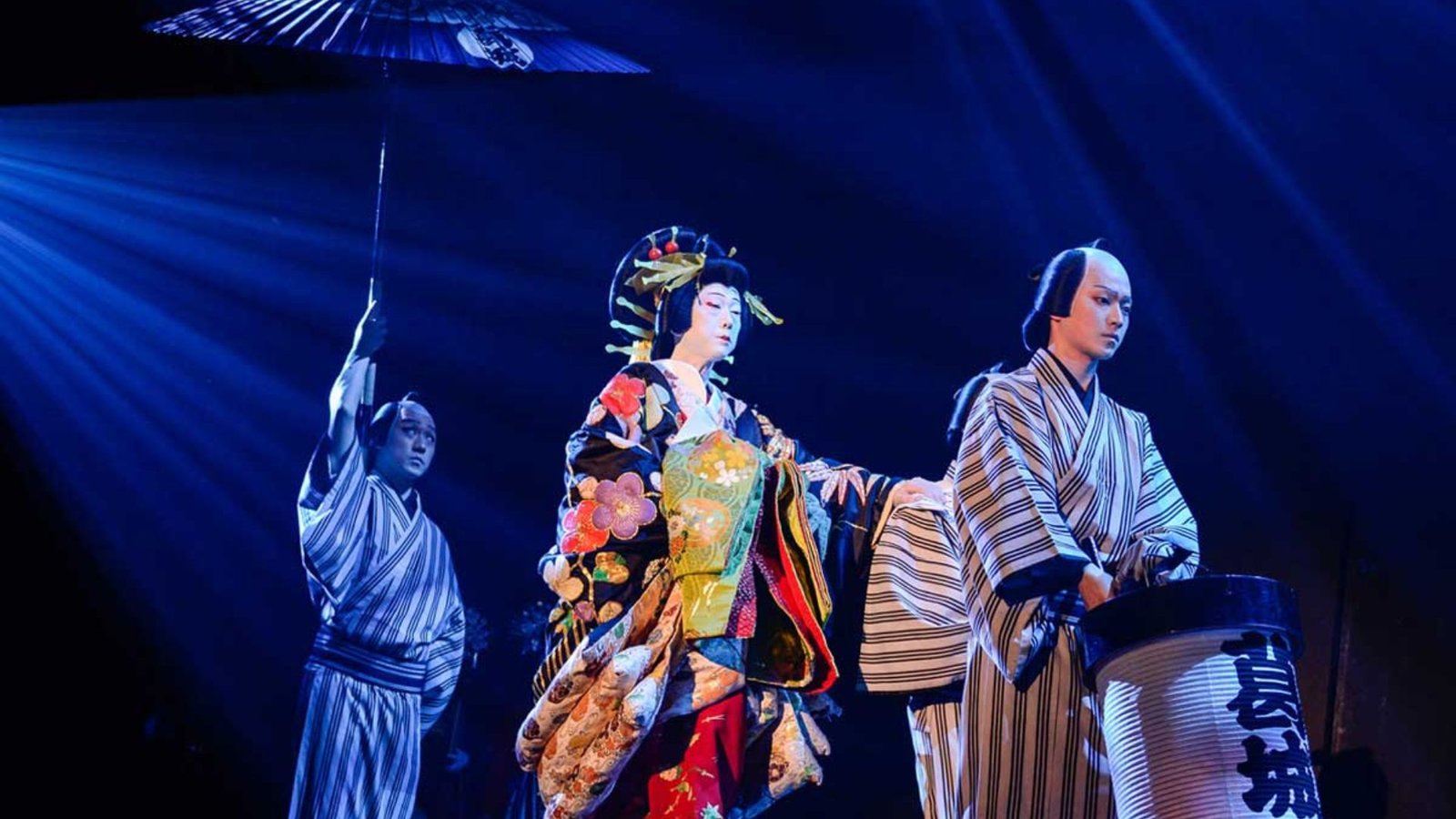The Influence of Kabuki Theater on Modern Japanese Acting
Kabuki theater, a traditional form of Japanese drama dating back to the early 17th century, has profoundly influenced modern Japanese acting. Renowned for its vibrant performances, elaborate costumes, and stylized movements, Kabuki has left an indelible mark on contemporary acting techniques and theatrical practices in Japan. This article explores how Kabuki theater has shaped modern Japanese acting, highlighting its lasting impact on performance styles, training methods, and cultural expression.

The Essence of Kabuki Theater
Kabuki theater is characterized by its highly stylized performances, colorful costumes, and dramatic storytelling. Its unique features include:
Elaborate Costumes and Makeup: Kabuki actors wear intricate costumes and makeup that enhance their characters’ appearance and expressiveness. These costumes often feature bold patterns and vibrant colors, while the makeup includes distinctive styles such as kumadori (makeup that emphasizes the actors’ facial expressions).
Stylized Movements and Gestures: The movement in Kabuki is highly stylized, with specific gestures and postures conveying particular emotions or character traits. These movements are precise and exaggerated, adding a dramatic flair to the performance.
Rich Vocal Techniques: Kabuki actors employ a range of vocal techniques to enhance their performances, including butsuzō (ritualistic chanting) and ki (vocal intensity). These techniques help convey the emotional depth and intensity of the characters.
Influences on Modern Japanese Acting
Kabuki theater has significantly influenced modern Japanese acting in several ways:
Performance Style and Expression: Many contemporary Japanese actors incorporate Kabuki’s stylized movements and expressive techniques into their performances. The exaggerated gestures and emotional intensity of Kabuki can be seen in modern theater and film, where actors use these techniques to enhance their portrayals and engage audiences.
Training and Methodology: Traditional Kabuki training methods continue to influence modern acting practices. Actors often study Kabuki techniques to develop their skills in movement, expression, and vocal performance. This training helps actors master the art of conveying emotions and character traits with clarity and impact.
Costuming and Makeup: The elaborate costumes and makeup of Kabuki theater have inspired modern costume and makeup design in Japanese theater and film.
Cultural Continuity and Innovation: Kabuki’s emphasis on storytelling and cultural heritage has inspired modern Japanese actors to explore themes of identity, tradition, and history. By integrating traditional Kabuki elements into contemporary performances, actors contribute to the preservation and evolution of Japanese cultural expression.
Examples of Kabuki Influence in Modern Media
Theatrical Productions: Many modern Japanese theater productions incorporate Kabuki elements, blending traditional techniques with contemporary storytelling. Productions often feature Kabuki-inspired choreography, costume design, and vocal styles, creating a unique fusion of old and new.
Film and Television: Kabuki’s influence extends to Japanese film and television, where directors and actors draw on its dramatic techniques to enhance storytelling. Films and TV shows may include references to Kabuki performances, incorporating its visual and emotional elements into modern narratives.
International Impact: Kabuki’s influence has also reached beyond Japan, with its techniques and aesthetics inspiring international theater and film.
Conclusion
Kabuki theater has left an enduring legacy on modern Japanese acting, influencing performance styles, training methods, and cultural expression. Its dramatic techniques, elaborate costumes, and rich vocal styles continue to inspire contemporary actors, blending traditional artistry with modern innovation. By incorporating Kabuki elements into their work, Japanese actors honor a rich theatrical heritage while contributing to the evolution of global performance art.



